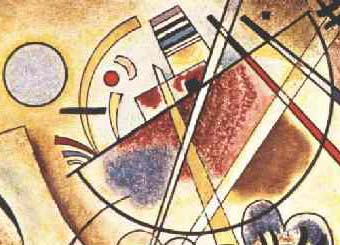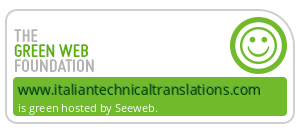How it gets done: a translation practice that favours quality
We organise our workload with the emphasis on translation quality, trying to put into effect all those pointers which improve quality and make it possible to find and correct any errors in the translations.
The relationship with the client
The relationship with the client is the first quality assurance pointer. This relationship does not come to an end when the order is received, but is constantly extended so as to arrive at the required product together: choosing the right linguistic register, identifying the proper language, not only related to the industry, but specific to the individual company (and its foreign associate for which the translation is intended), creating a dictionary of specific terms to use.
A point of contact
We feel it is important to have a direct point of contact within the client's organisation, enabling us to give the client the guarantee of being involved and focused, so that any problems that might arise during the job can be dealt with immediately, from the need to make changes to the text, to varying priorities and due-dates.
A long-term relationship
We feel that the best way of dealing with the client is that of creating a long-term relationship aimed at producing results over time whose quality is the object of mutual satisfaction, and to do this it is important that there is dialogue and feedback on the work done.
How we prepare a translation
For each order received, we assess, in relation to the size of the job, the languages involved, the necessary expertise and the time scale required, whether the work can be done internally, or needs assigning to one or several external specialists (in relation to the size and time scale allowed for the job, but also the type of job: for example, the translation of business website content could require the involvement of different specialists).
The most suitable professional
We have selected
a consistent group of translation professionals, from among whom
we normally find the translators who, given their knowledge of the language,
their professional skills and their sectors of specialisation, are the
most suitable for translating the particular assignment.
In special cases,
however, we are capable of selecting the most suitable translator by resorting
to appropriate information channels (this is sometimes the case, for example,
with interpreters in particular languages and areas).
The support tools
If necessary,
the real job of translating is preceded by the search and preparation
or completion of an appropriate dictionary
of the characteristic terms for the particular industry.
We make reference
to a vast library of texts, documents and compilations both electronic
and on paper, which we have built up over the years and which is constantly
updated; websites on the Internet (company sites, technical-business
catalogues, technical and scientific papers) have become a sound source
of terminology and information over the last decades.
Additional documents
which the client can provide us with, translations of old versions of
the document, as well as drawings and photographs, often prove to be extremely
helpful for resolving any doubts of interpretation.
The most appropriate
computer assisted translation tools (with the related capability of handling
translation memories), and the desktop and web search tools are an important
support.
How we check and finish off the translation
After the translation
and correction of any spelling mistakes, the text is re-read for a
review of the terminology used, which must be consistent with the prepared
dictionary, and of the specific style, which must be clear and appropriate
for the type of text translated and the audience for whom it is intended.
Tables and figures are checked, as well as the corresponding captions,
which often need adjusting due to the differing verbosity of the various
languages (Italian and French for example generally need more space than
English, which is notoriously concise).
The page layout
The page layout
and typesetting are checked, so creating, in accordance with the instructions
agreed upon with the client, a text that is ready for publication (a document
"for publication"), or a document that is identical to the original, or
a legible and clear text with the minimum of typographic improvements
(a document "for information").
If necessary, the table of contents and
the index are produced and updated.
Figures and photographs can be included
in the electronic format of the document, even if they only exist on paper.
The list of inconsistencies
If it is the case,
a list of any inconsistencies and/or errors found in the original text
is reviewed for completeness and sent to the client with the finished
translation.
In case of a direct contact with the right
person within the client's organisation, these problems can be dealt with
straightaway during the translation.
A corporate website
In cases where the subject to be translated consists of an entire website, several specialists may be involved, to integrate the translation of the pages into a functional structure which includes all the user interface for its technical and advertising aspects.
Get a free quote for your translation!
- Request further information, or a free cost estimate and turnaround time without any obligation on your part.
- Please attach the document(s) to be translated, which are used to calculate the price of your translation.
How we deliver the product
We deliver the finished product as an electronic file, which is sent via e-mail, placed at the client's disposal on our ftp server, delivered on optical media, or in some cases as a printout sent by post or fax.




